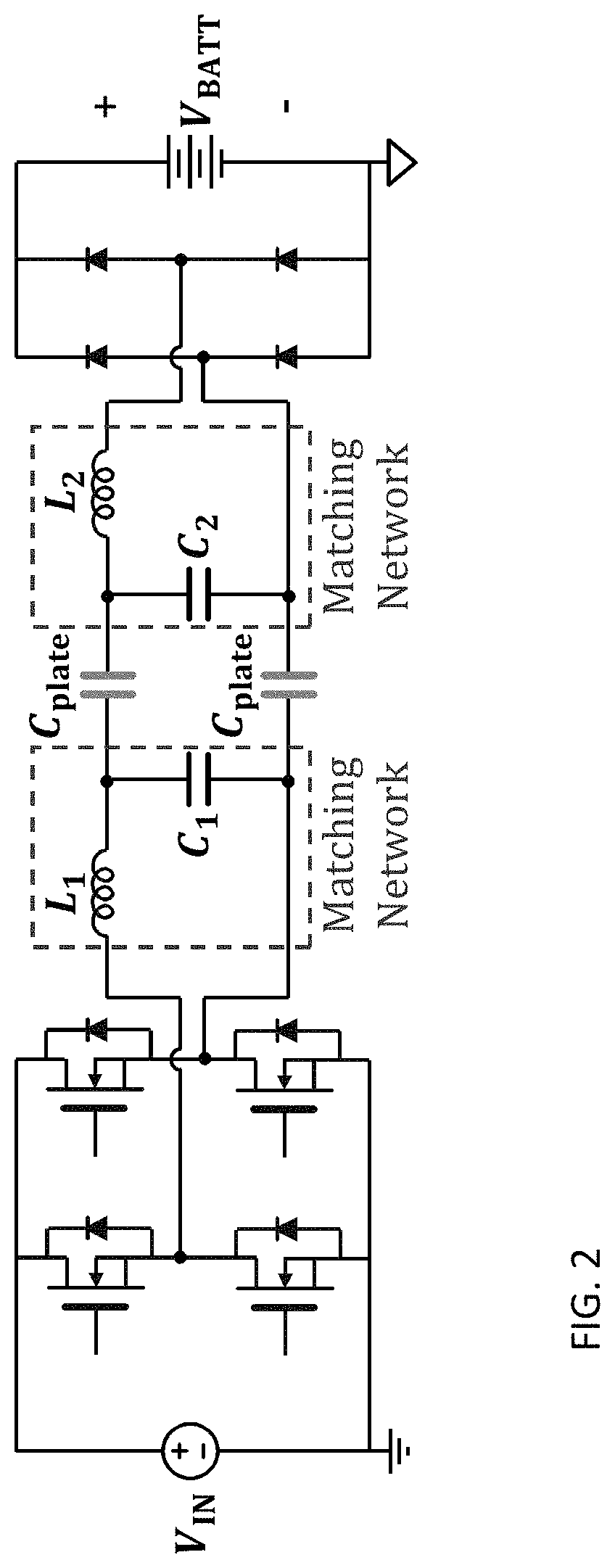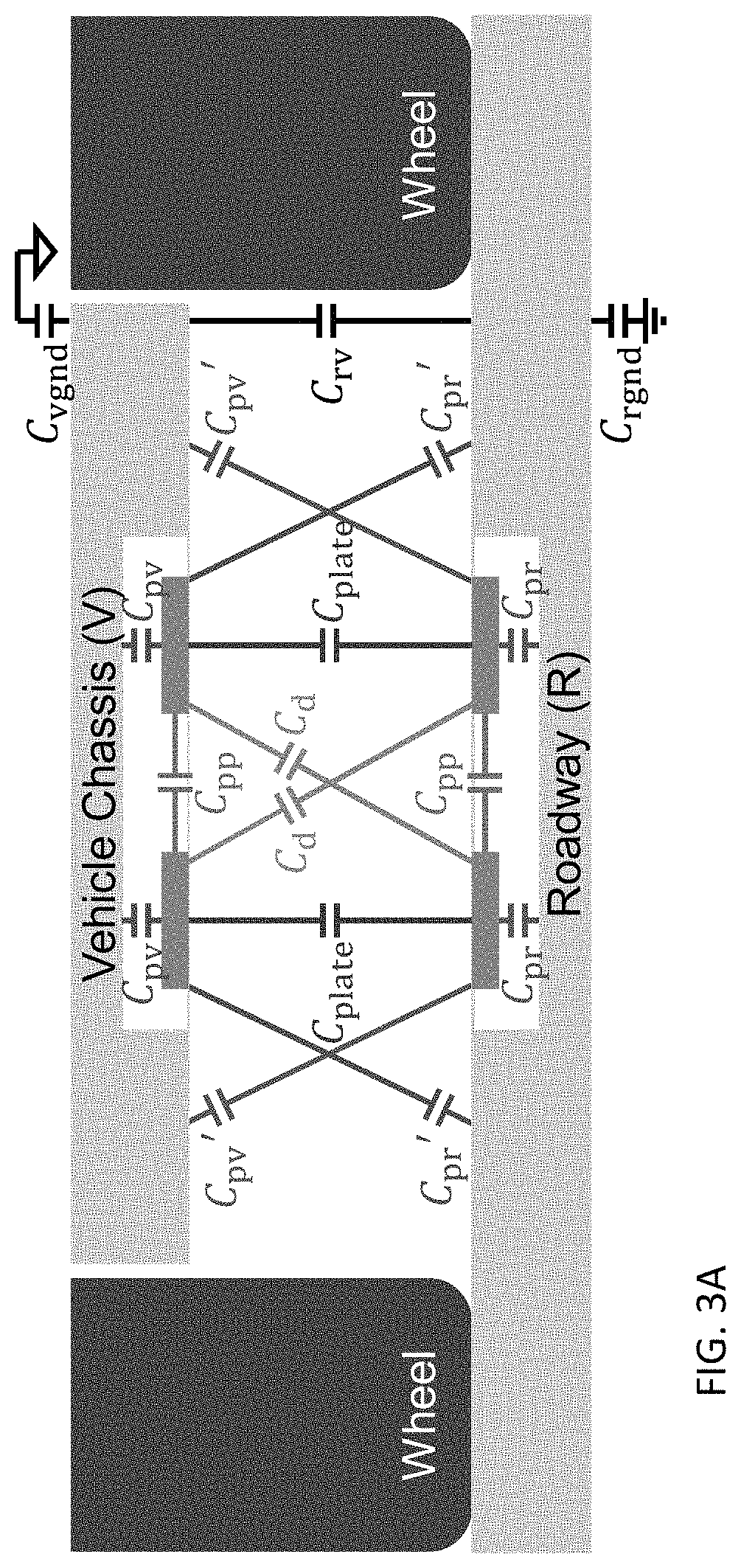Matching networks, inductors, and coupled-inductor capacitive wireless power transfer circuit and related techniques
a technology of matching network, which is applied in the field of matching network, inductors, coupledinductor capacitive wireless power transfer circuit, can solve the problems of limiting the operating frequency of such systems, the major loss source of inductors used in matching networks, and the potential size reduction of such systems, so as to improve the efficiency of a capacitive wpt system, reduce the size, and enhance the effect of efficiency
- Summary
- Abstract
- Description
- Claims
- Application Information
AI Technical Summary
Benefits of technology
Problems solved by technology
Method used
Image
Examples
example variants
[0042]The coupled inductor presented above is merely an example of its numerous possible implementations. Some example implementations are provided below, with terminal markings A, B, C, and D aligning to how the coupled inductor is connected to the circuit of FIG. 5(a).
[0043]FIG. 10 shows an example implementation of a coupled inductor constructed with a flat wire.
[0044]FIG. 11 shows an example implementation of a coupled inductor utilizing two parallel windings. In further implementations, two or more parallel windings may also be used.
[0045]FIG. 12 shows another example implementation of a coupled inductor wound on a semi-toroid with interleaved-foil wire. The interleaved-foil wires, in this particular example, are connected in parallel and are shown in black and white.
[0046]FIG. 13 shows yet another example implementation of a coupled inductor wound on a toroid with interleaved-foil wire.
[0047]FIG. 14 shows an example implementation of a capacitive WPT system comprising multi-st...
PUM
| Property | Measurement | Unit |
|---|---|---|
| parasitic capacitances | aaaaa | aaaaa |
| electric fields | aaaaa | aaaaa |
| voltage | aaaaa | aaaaa |
Abstract
Description
Claims
Application Information
 Login to View More
Login to View More - R&D
- Intellectual Property
- Life Sciences
- Materials
- Tech Scout
- Unparalleled Data Quality
- Higher Quality Content
- 60% Fewer Hallucinations
Browse by: Latest US Patents, China's latest patents, Technical Efficacy Thesaurus, Application Domain, Technology Topic, Popular Technical Reports.
© 2025 PatSnap. All rights reserved.Legal|Privacy policy|Modern Slavery Act Transparency Statement|Sitemap|About US| Contact US: help@patsnap.com



